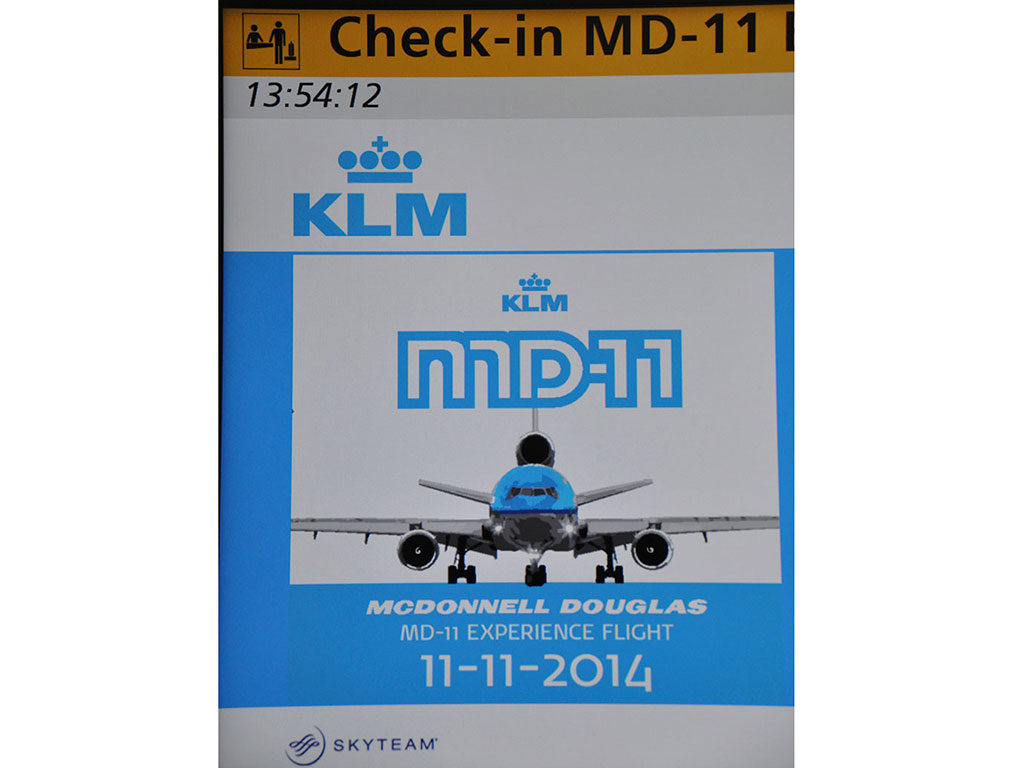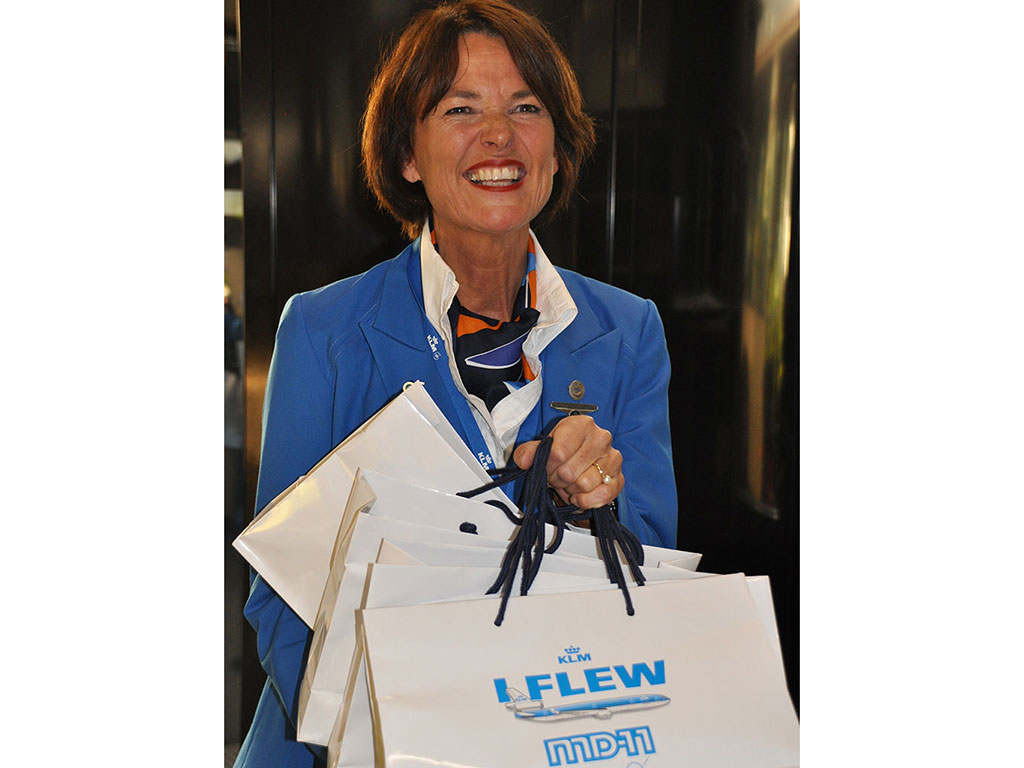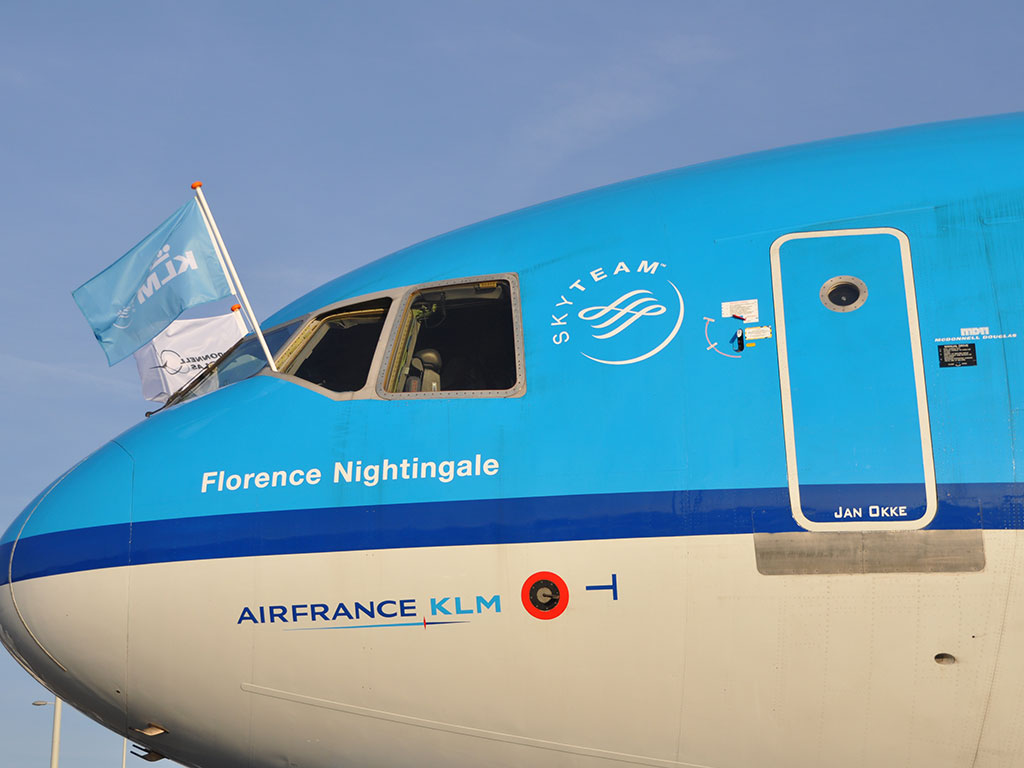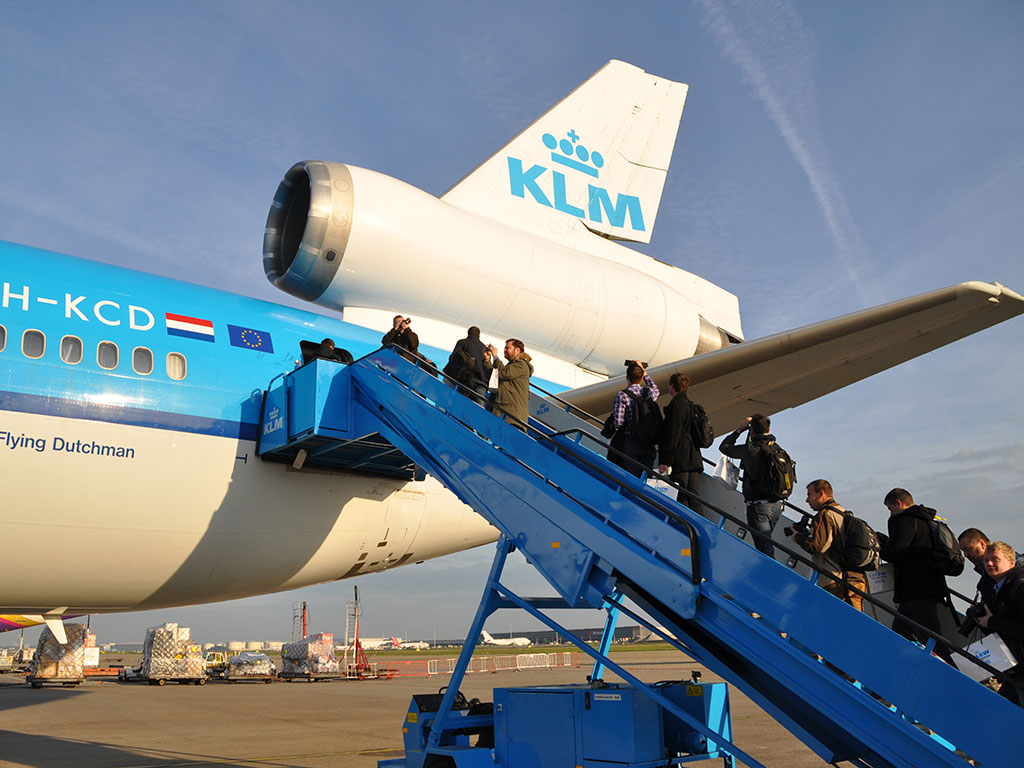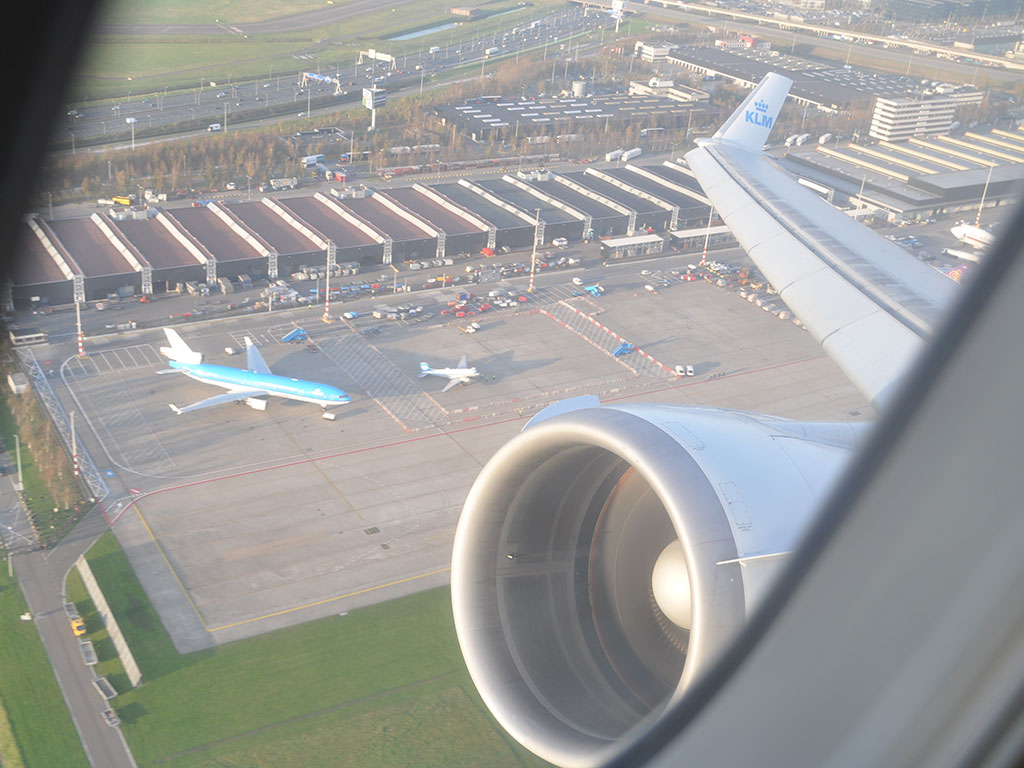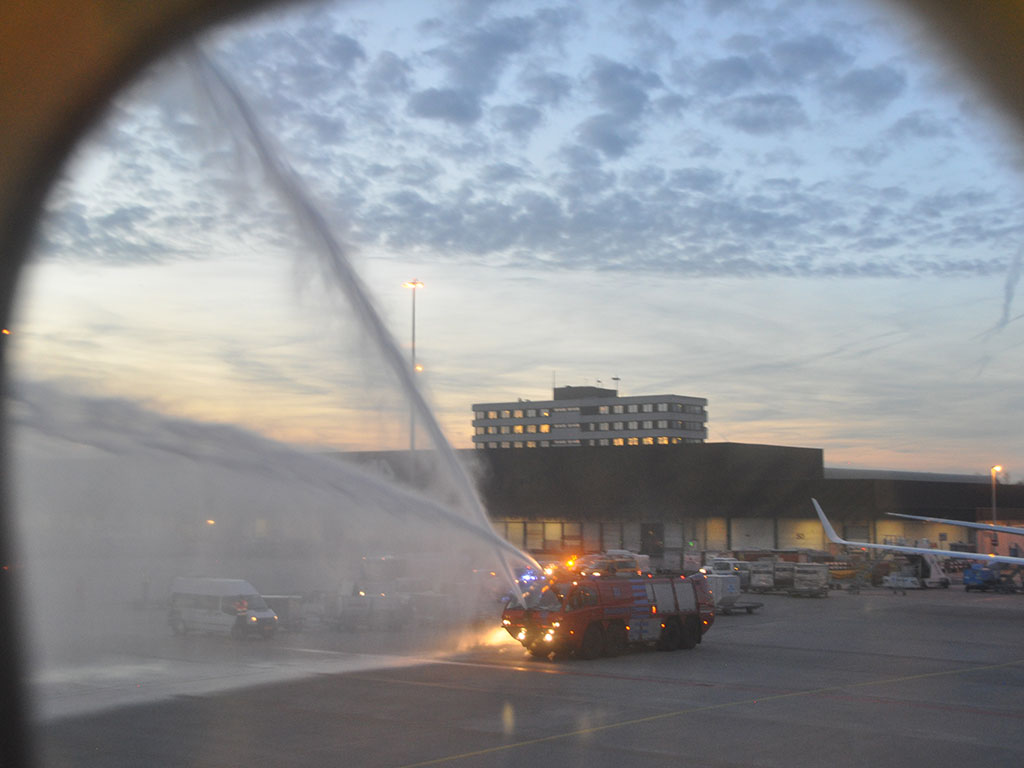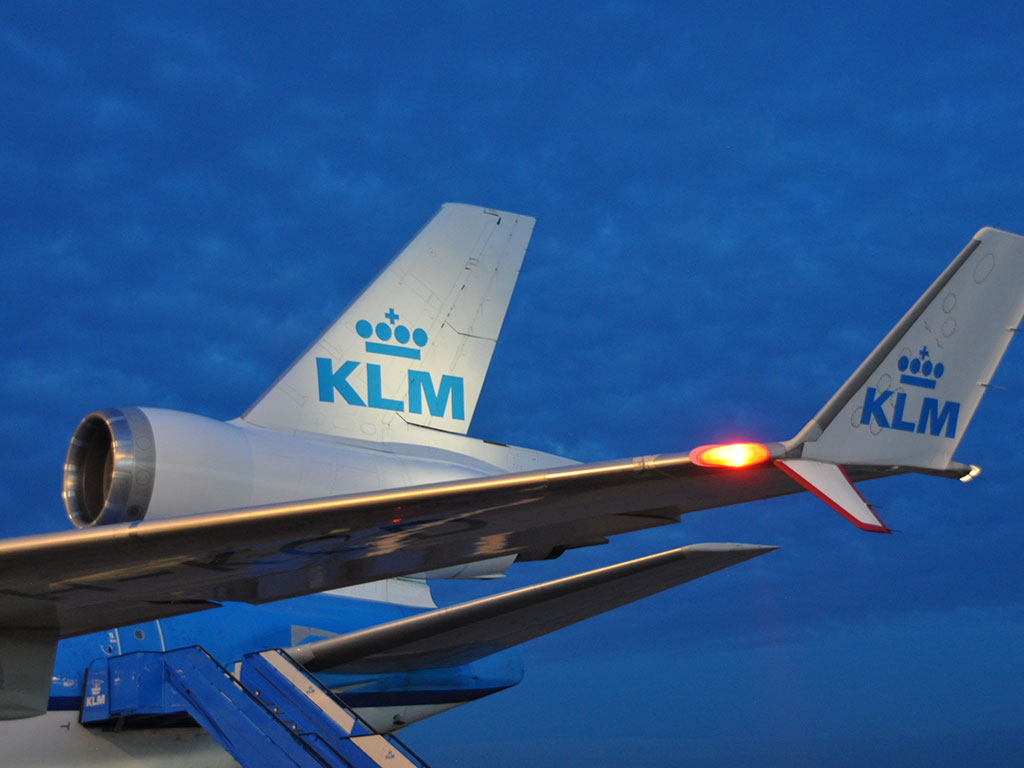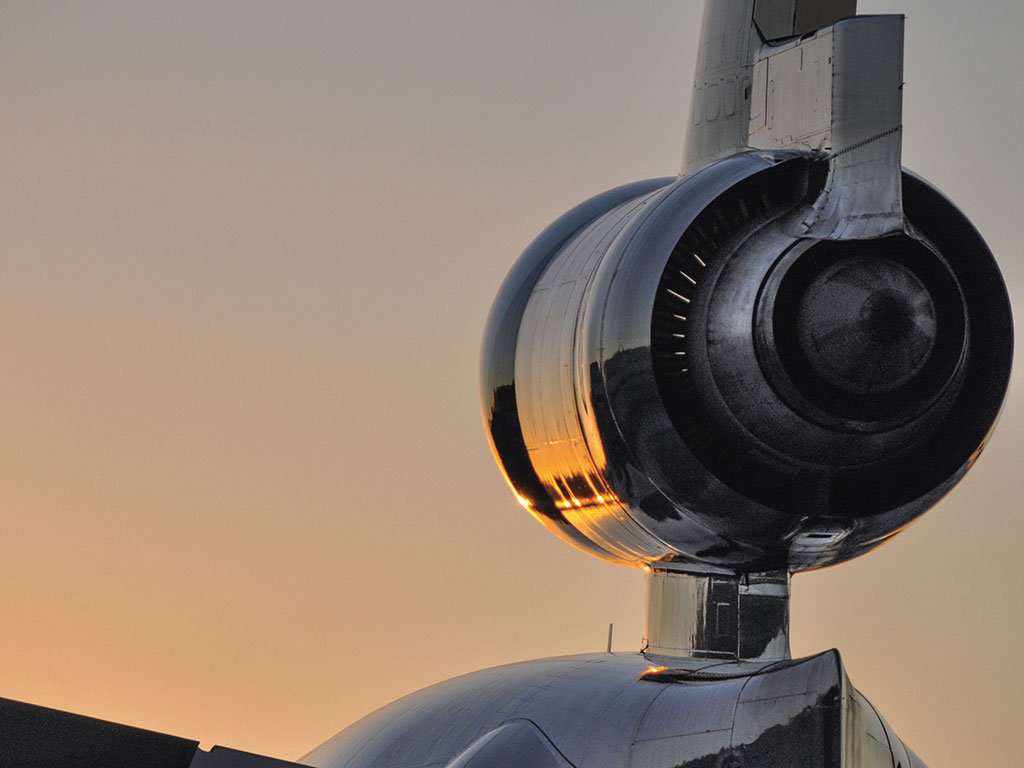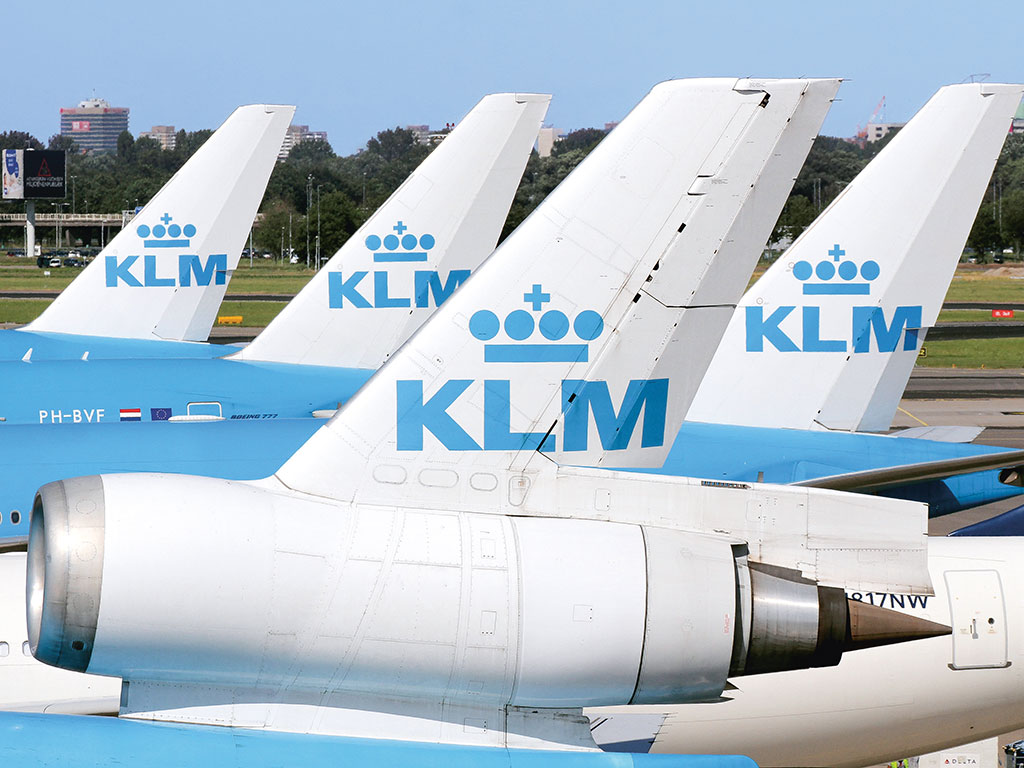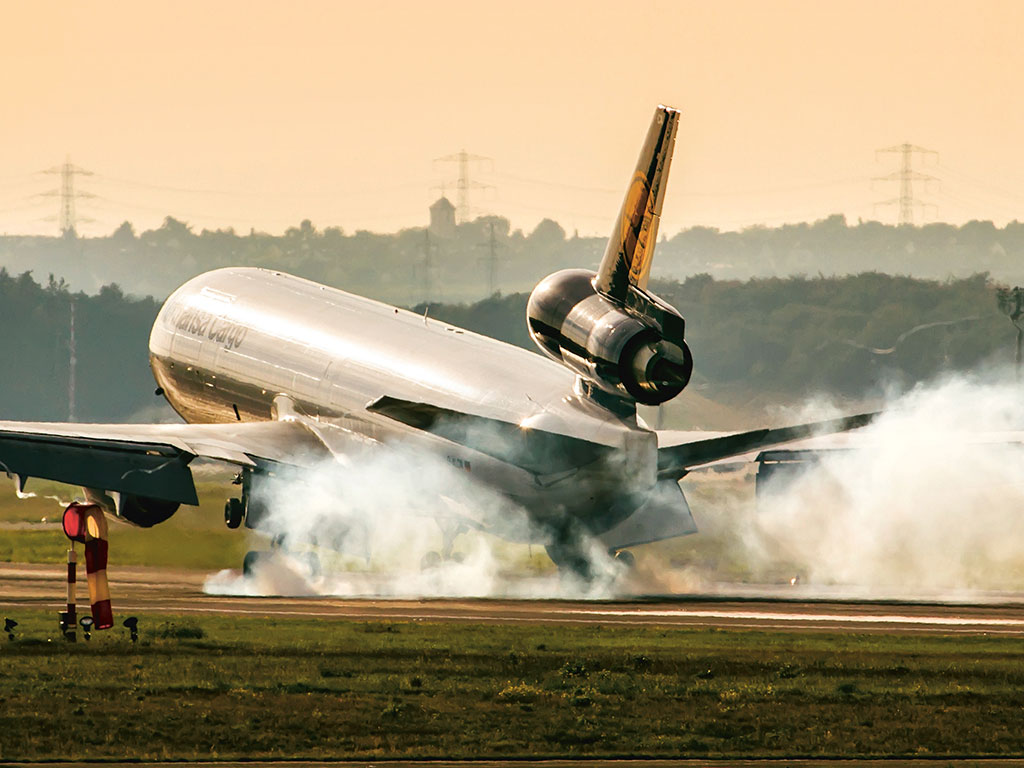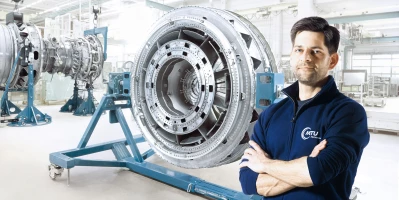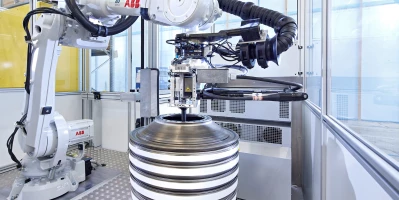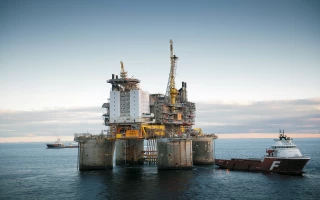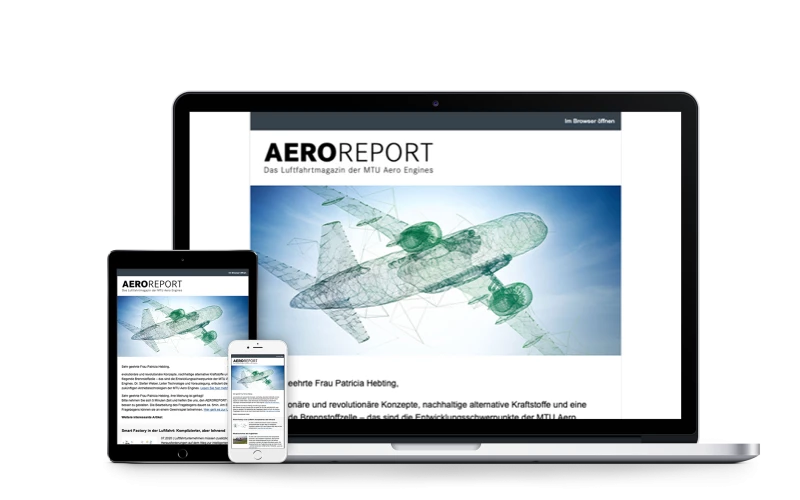Some occasions call for a bit of symbolism: the first of three farewell flights for the very last McDonnell Douglas MD-11 in passenger service took off on 11.11.2014 at 11:00 a.m., with tickets priced at exactly 111 euros. There was a massive response: all 592 seats that KLM put on sale in September were sold out in just four minutes, almost causing the KLM internet server to collapse. Aviation enthusiasts from all over the world converged on Amsterdam to fly for the last time on board one of these classic commercial airplanes. The day marked the end of several eras in aircraft construction, including the unique relationship between the illustrious Royal Dutch Airlines and the manufacturer McDonnell Douglas, which was incorporated into the Boeing Group many years ago.
KLM is the only airline in the world to have operated every single model brought to market by the Californian aircraft manufacturer since 1934. It all started with the DC-2, an airworthy example of which still exists in the Netherlands. Next came the DC-3, which KLM also chose to exhibit on the apron on this valedictory November day as one of its classic aircraft alongside a further MD-11. After that, KLM operated the DC-4 and even the largely forgotten DC-5, only twelve of which were built. And of course there were the classic four-engine long-haul aircraft, the DC-6 and the DC-7, and the first intercontinental jet, the DC-8. The twinjet DC-9 was the backbone of KLM’s European fleet for many years, while the DC-10 and later the MD-11 served long-haul routes.
Boarding For the price of 111 euros each, aviation enthusiasts from all over the world enjoyed the last flight of the MD-11 in passenger service on a glorious fall day.

Farewell to MD-11

No less significant an event on this sunny day in late fall was the bowing out of trijets from commercial passenger service—the final regular MD-11 flight had already flown from Montreal to Amsterdam on October 26, 2014. There had been times, though, when commercial aircraft with three engines were extremely widespread. In the 1960s, twinjet aircraft were not certified to cover longer distances or cross oceans, and three engines were generally more cost-effective than four. The prime example of these trijets was the Boeing 727, more units of which were manufactured than any other commercial aircraft in the world for many years – a grand total of 1,832. By comparison, the British Hawker Siddeley Trident 3 was more of a footnote in trijet history with only 117 airplanes built. By the end of the decade, people were beginning to consider fitting long-haul widebody jets with three engines, as airlines needed a smaller alternative to the Jumbo Jet, the nickname for the groundbreaking Boeing 747, which set the standard back then. And so the McDonnell Douglas DC-10 was born, and entered regular service in 1971. Hot on its heels came the Lockheed L1011 TriStar, although this competitor never achieved the success of the DC-10. A total of 446 units of the remarkable DC-10 were made between 1968 and 1988, of which 374 were built for passenger service. Competitor Lockheed was destined to always lag behind, with just 250 aircraft leaving the factories between 1968 and 1984. And then in 1990, the MD-11 was launched as a successor to the DC-10.
A LEGEND BOWS OUT:
The MD-11 is more elegant than its predecessor, and not only thanks to its longer fuselage—almost six meters longer than the DC-10’s—but because it is the first commercial aircraft ever to feature winglets. In addition, the vertical stabilizer above the middle engine is shorter and smaller, and another major improvement was new engines, especially the GE CF6-80-C2D1F, in which MTU Aero Engines has a stake (see Inside MTU). On top of this, the MD-11 was the first trijet to have a modern two-person cockpit. “The MD-11 is a very robust and elegant aircraft,” says flight captain Charley Valette, until recently chief MD-11 pilot at KLM.
However, in 1995 competition came along in the form of the Boeing 777-200ER and soon demonstrated that aircraft with two engines and ETOPS certification were capable of safely flying longer distances over water. That was the beginning of a trend that ultimately spelled the end for the trijet in commercial passenger service—as well as greatly diminishing the importance of quad-jet aircraft. As a consequence, MD-11’s commercial performance fell far below expectations. What is more, once the first operator Finnair had put the new trijet into service in November 1990, it soon emerged that the aircraft was unable to fulfill the range and fuel consumption claims that had been made for it. The manufacturer introduced a whole package of improvements, but it was too late. Major clients such as Singapore Airlines cancelled their orders and bought the subsequently launched quad-jet A340-500 for ultra-long-haul flights instead. The number of engines also played a large role psychologically at the start of the 1990s, when many passengers and even some pilots were still uncertain about crossing the Atlantic in a two-jet aircraft. “We could have flown to America with the Boeing 767 no problem, but because the competition was doing it with quad-jet aircraft, LTU was forced to choose the MD-11,” says German flight captain Joe Moser, who was head of operations for LTU at the time.
“I’ll miss the MD-11; she’s my favorite and that won’t ever change.”
In the end, the MD-11 was delivered to airlines all over the world—200 aircraft in total-over a period of only nine years. The manufacturer, who was taken over by Boeing in 1997, would have had to sell 300 to break even. 144 of the MD-11s that were built started their careers in passenger service, while the rest were cargo aircraft. And it was in the transportation of goods that the MD-11 found its niche. Soon the majority of passenger versions were converted into freighters, the first after serving only five years as a passenger aircraft. Of the 150 MD-11s that were active in the summer of 2014, all of them were used as cargo aircraft—except for the remaining four of what were originally ten KLM passenger airplanes. In February 2010, the first MD-11 customer Finnair became the second to last airline to retire its fleet. Then KLM flew its first MD-11 out into the American desert to cannibalize it for spare parts in July 2012. And finally, on November 11, 2014, the hour came for the very last commercial trijet passenger flight.
The atmosphere ahead of final flight KL9899 from Amsterdam to Amsterdam is relaxed — KLM’s CEO Pieter Elbers can be seen mixing with the passengers under bright sunny skies. “It’s actually a good day for us, as the successor aircraft A350 and Boeing 787-9 are up to 25 percent more cost-effective to operate than the MD-11,” says Elbers. “Although we knew that many of our customers have a soft spot for the MD-11, we were still surprised at the response to the farewell flights, which have really struck a chord,” he admits. While boarding, passengers are already writing their farewell messages on the outside of the plane beside the doors. Each guest receives a gift bag with the legend “I fly MD-11,” whose contents include a freshly printed safety card prized by collectors. The galleys are festooned with garlands for the occasion, while the cabin is a hive of excited activity and the flight attendants have a job to get the guests to put their seat belts on.
Shortly after the scheduled time of 15:30, the MD-11 bearing the name Florence Nightingale and the registration PH-KCD, which was delivered back in September 1994, begins its taxi to the runway. All three turbofans give full thrust at takeoff, and the distinctive MD-11 sound so loved by its fans can be heard particularly well in the rear of the cabin. It is only a brief blast, however, as the ascent ends at an altitude of around 2,000 feet (not even 700 meters). What follows is a special sightseeing tour of the Netherlands from the air in clear fall weather, taking in the North Sea coast, Rotterdam, Eindhoven and Lake Ijssel; polders, ships and windmills. Many of the enthusiasts on board, however, scarcely look out the windows. They are too busy filming in the cabin—which still looks amazingly modern—posing for photos and drinking wine from bottles sporting special MD-11 stickers. Chief pilot Charley Valette himself sits in the cockpit and plays the role of tour guide over the loudspeakers during the low-altitude flight over the Netherlands. There’s a clamor for waterproof felt-tip pens in the cabin, with everyone looking to write a farewell message on storage compartments and walls. The CEO too takes a pen and scribbles the following message on the luggage compartment over row 12: “Thanks MD-11 for 21 years of loyal service to this royal airline.” All too soon, the airplane lands again in Schiphol after only 54 minutes in the air. In honor of the MD-11, a procession ensues over the airport’s main taxiways, with the twenty-year-old trijet led by KLM’s legendary DC-3 aircraft, which was built exactly 50 years earlier. Captain Charley Valette, who sat in the MD-11 cockpit for more than 5,000 flight hours over a period of 16 years, is succinct in his assessment: “I’ll miss the MD-11; she’s my favorite and that won’t ever change.”







